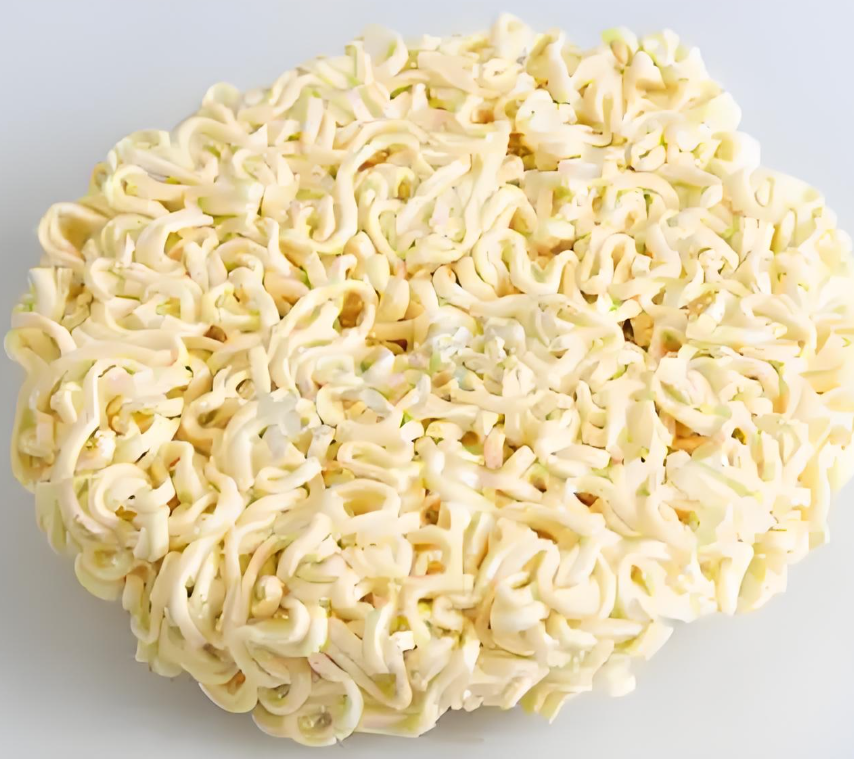Unveiling the Noodle Matrix: The Six Critical Pillars of Small-Batch Instant Noodle Production
The humble instant noodle. A global icon of convenience, a savior for students, a midnight snack for millions. For decades, instant noodle making machine it has been synonymous with mass production: vast factories, towering silos of flour, and high-speed assembly lines churning out billions of identical blocks packaged in plastic and foil. This is the world of the industrial instant noodle—efficient, consistent, and affordable.
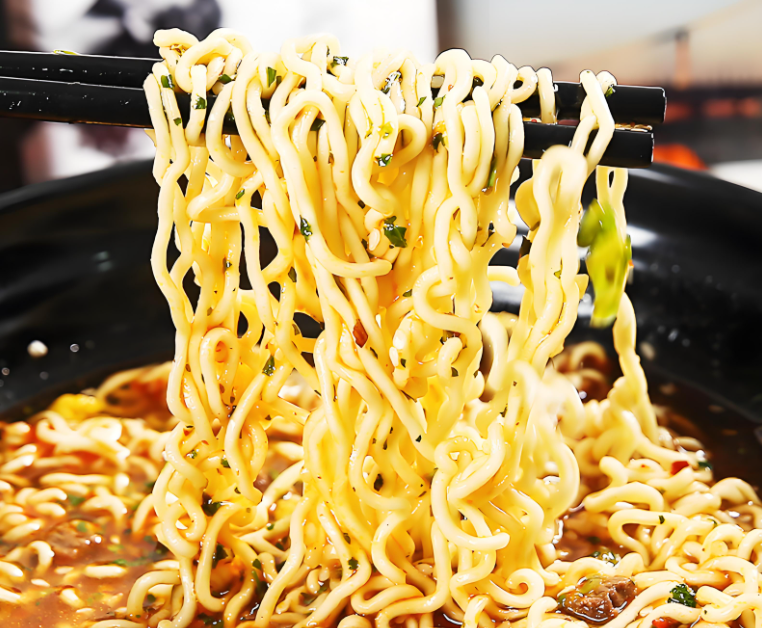
But a quiet revolution is simmering. A new wave of artisanal, small-batch instant noodle producers is emerging, challenging the monolithic paradigm. These culinary alchemists are not merely making noodles; they are crafting an experience. They appeal to a growing consumer base that values quality, transparency, provenance, and gastronomic adventure over mere convenience and cost.
What does it take to succeed in this niche but demanding arena? The journey from a simple idea to a shelf-stable, delicious bowl of noodles is a complex ballet of food science, instant noodle making machine engineering, and culinary art. For the small-scale producer, the margin for error is slim, and the challenges are magnified. Success hinges on mastering six fundamental, interlocking pillars:
- The Flour Foundation: Beyond Basic Wheat
- The Alchemy of the Dough: Water, Alkali, and Structure
- The Precision of Noodle Architecture: Sheeting, Slitting, and Shaping
- The Science of Preservation: Steaming, Frying, and the Modern Alternatives
- The Soul of the Bowl: Crafting Complex, Multi-Layered Soup Bases and Sauces
- The Ecosystem of Execution: Scalable Processes, Packaging, and Brand Narrative
This article will dissect each of these pillars, unveiling the intricate details that separate a mediocre product from an extraordinary one.
Pillar 1: The Flour Foundation: Beyond Basic Wheat
At the heart of every noodle, instant or otherwise, lies flour. For the industrial producer, flour is a commodity—a consistent, high-gluten wheat flour designed for maximum efficiency and shelf stability. For the small-batch producer, flour is the soul of the noodle. The choice of flour dictates the final product’s texture, mouthfeel, elasticity, and even its ability to rehydrate properly.
The Protein Imperative: Gluten’s Vital Role
The primary component that defines a noodle’s character is its protein content, which forms gluten when hydrated. Gluten is the protein network that gives dough its structure and elasticity.
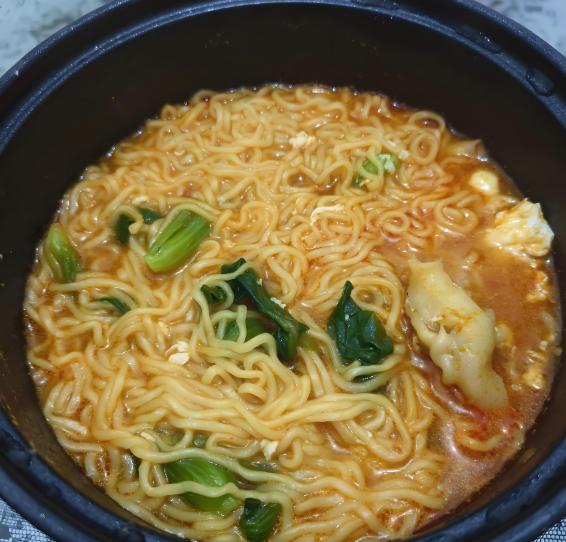
- High-Protein Flour (12-14%): Ideal for creating noodles with a strong, chewy, and elastic bite (known as al dente in Italian or koshi in Japanese). This is essential for styles that mimic ramen or other firm noodles. The robust gluten network can withstand the rigors of steaming and frying or drying without disintegrating.
- Medium-Protein Flour (10-12%): Creates a more tender noodle, suitable for styles that aim for a softer, smoother mouthfeel. This might be preferred for certain Southeast Asian or soup-style noodles where a less aggressive chew is desired.
The small-batch producer cannot simply buy generic “bread flour” or “all-purpose flour.” They must source from millers who can provide consistency and, often, specialty blends. They become intimately familiar with the protein quality, not just the quantity. instant noodle making machine The type of wheat (e.g., hard red spring, soft white winter) and its growing conditions profoundly affect the gluten’s strength and extensibility.
The Art of the Blend: Incorporating Alternative Flours
This is where small producers truly innovate. To create unique textures, flavors, and nutritional profiles, they venture beyond 100% wheat.
- Whole Wheat Flour: Adds a nutty flavor and fibrous texture but requires careful formulation. The bran particles can cut the gluten strands, resulting in a weaker, more brittle noodle. Solutions include using finer-ground whole wheat flour or a lower percentage blend.
- Rye or Spelt Flour: These grains contribute distinct, earthy flavors and different nutritional profiles. They have their own gluten proteins (though rye gluten is less elastic) which interact with wheat gluten, creating a complex, often denser texture.
- Legume Flours: (e.g., Soybean, Chickpea, Mung Bean). Mung bean starch is the traditional base for cellophane noodles, known for their translucency and slippery texture. Blending a small percentage into wheat flour can enhance smoothness and add a protein boost. Soy flour can enrich the flavor and nutritional content.
- Starch Additions: (e.g., Tapioca, Potato, Corn Starch). These are often used not for flavor, but for texture modification. They can reduce the “toughness” of a high-gluten flour, making the noodle smoother and glossier. They also affect the noodle’s water absorption and retention properties during rehydration.
The Granular Details: Ash Content and Particle Size
Two often-overlooked but critical factors for the serious noodle maker are ash content and particle size.
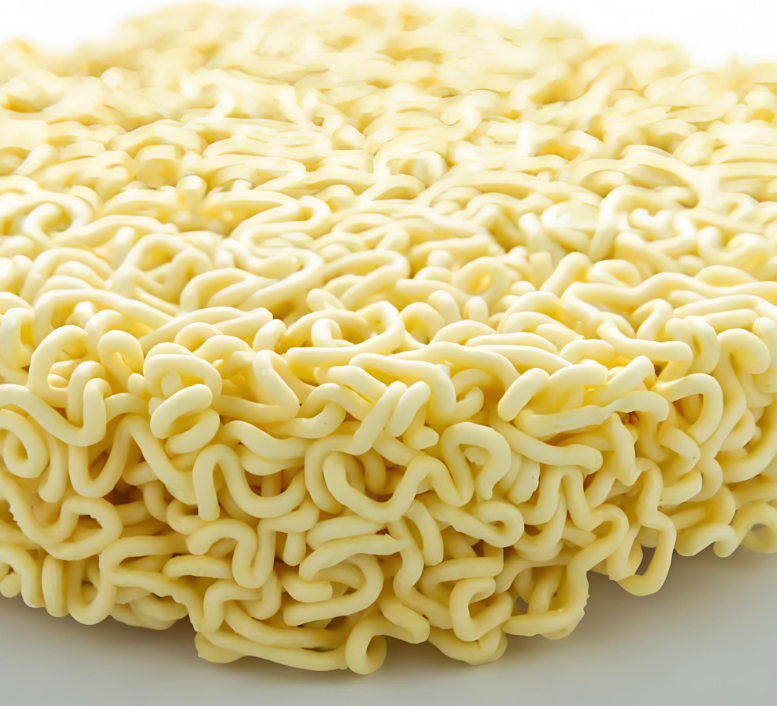
- Ash Content: This is a measure of the mineral content left after a sample of flour is incinerated. It is an indirect indicator of extraction rate—how much of the original wheat kernel remains. A low ash content (e.g., 0.4%) indicates a highly refined, white flour from the endosperm. A higher ash content (e.g., 0.6%) indicates more of the bran and germ are included, leading to a more robust flavor and color but a potentially weaker gluten structure. The choice here is a philosophical one, balancing purity of texture against depth of flavor.
- Tamaño de las partículas: The fineness of the flour grind impacts water absorption and the smoothness of the final noodle. A finer flour hydrates more evenly and can create a silkier texture. Small-batch producers may work with millers to achieve a specific grind, or even sift their flour to ensure consistency.
For the small-batch producer, the flour selection is the first and most crucial declaration of intent. It is a decision that echoes through every subsequent step of the process.
Pillar 2: The Alchemy of the Dough: Water, Alkali, and Structure
Flour is potential; dough is reality. The transformation is governed by the careful addition of liquids and, in the case of many Asian-style instant noodles, alkaline salts. instant noodle making machine This is where chemistry meets craft.
The Role of Water: Hydration and Temperature
The amount of water added to the flour, known as the hydration level, is a primary determinant of the noodle’s texture.
- Low Hydration (28-32%): Common in many industrial and some traditional noodles. This creates a very hard, dense dough that results in a firm, chewy noodle with a distinct “bite.” It is easier to extrude and less sticky, but requires powerful machinery.
- Medium Hydration (33-38%): A sweet spot for many artisanal producers. It offers a good balance, providing enough water to develop a strong gluten network without the dough becoming too sticky to handle through smaller sheeting machines. The resulting noodle is elastic yet tender.
- High Hydration (39%+): More challenging to handle but can yield a uniquely soft, almost silken texture. This is often the domain of fresh pasta or specific Udon-style noodles, but some innovative instant noodle makers push these boundaries, using advanced drying techniques to preserve the delicate structure.
Water temperature is equally critical. Cold water (below 15°C / 59°F) slows down gluten development and enzyme activity, which is desirable for a rest period before sheeting. It helps prevent the dough from becoming too elastic and difficult to roll out.
Kansui: The Alkaline Agent of Transformation
For ramen and many other Asian noodle types, the secret ingredient is kansui (枧水), a term for alkaline mineral water. Traditionally, it was water sourced from specific lakes in Inner Mongolia that contained potassium carbonate and sodium carbonate. Today, it is a carefully controlled blend of these salts.
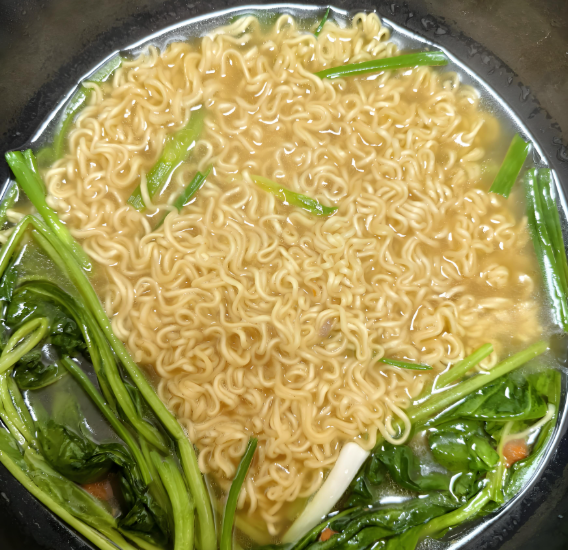
The introduction of kansui to the dough is nothing short of alchemical. It has several profound effects:
- Sabor: It imparts a distinct, slightly savory, and complex flavor often described as “eggy” or “alkaline.” This is a hallmark of classic ramen.
- Color: It reacts with flavonoids in the flour, giving the noodles their characteristic yellowish hue.
- Textura: It strengthens the gluten network, making the noodles firmer, more elastic, and less sticky. It also causes the starch in the flour to gelatinize at a higher temperature, which is crucial for the subsequent steaming process, allowing the noodle to cook without becoming mushy.
- pH and Preservation: By raising the pH of the noodle, it creates a less hospitable environment for microbial growth, acting as a natural preservative.
Small-batch producers often experiment with kansui ratios. A higher ratio creates a firmer, more pungent noodle, while a lower ratio yields a milder, softer product. Some may even use baked baking soda (sodium carbonate) as a homemade, though less consistent, kansui substitute.
The Mixing and Kneading Process: Developing the Gluten Network
The goal of mixing and kneading is to uniformly hydrate the flour and develop the gluten network. For small-scale production, instant noodle making machine this is often done with a planetary mixer or a dedicated dough mixer. The process cannot be rushed.
- Incorporation: The initial slow mixing to combine flour and liquids without creating lumps.
- Kneading: The period of mechanical work where gluten strands align, cross-link, and form a continuous, elastic network. Under-kneading results in a weak, crumbly noodle. Over-kneading can make the dough too tough and difficult to sheet.
The mixed dough is then often rested. This “autolyse” period allows the water to fully hydrate the flour particles and the gluten to relax, making the dough more pliable and easier to sheet without tearing.
Pillar 3: The Precision of Noodle Architecture: Sheeting, Slitting, and Shaping
Once the dough is mixed and rested, it must be transformed from a shapeless mass into a thin, consistent sheet, and finally into individual noodles of a specific size and shape. This is a process of immense mechanical precision.
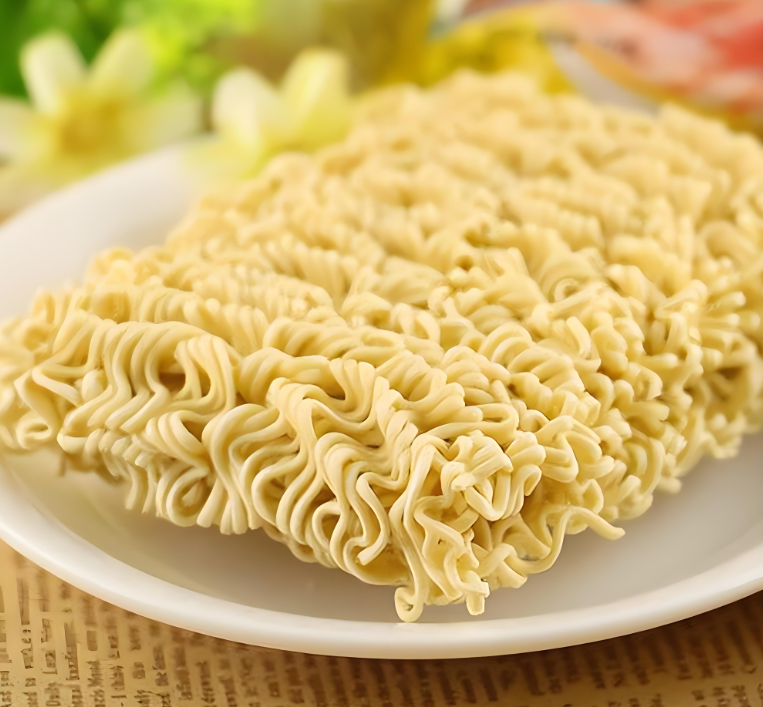
The Sheeting Process: From Mass to Membrane
Small-batch producers typically use a laminating sheeter, which consists of a series of consecutive rollers, each set closer together than the last.
- Initial Compression: The dough ball is first passed through a set of large rollers to create a thick, ragged sheet.
- Folding and Laminating: This thick sheet is often folded and fed back through the rollers. This folding (laminating) action is critical. It aligns the gluten network in parallel layers, which is what gives hand-pulled noodles their incredible elasticity and bite. Even in a machine, this principle is key to quality. Multiple passes with folding create a strong, layered structure.
- Gradual Reduction: The sheet is progressively passed through rollers with ever-decreasing gaps. This gradual reduction is essential to avoid over-stressing and tearing the gluten network. A sudden, large reduction would cause the dough to tear, creating weak points.
The final thickness of the sheet is a direct determinant of the noodle’s cooking time and final texture. A thin sheet (e.g., 1.0 mm) will make a delicate, fast-cooking noodle. A thicker sheet (e.g., 1.8 mm) will yield a hearty, chewy noodle.
The Cutting Edge: Slitting and Waviness
The final sheet is fed through a “slitter” – a roller equipped with precisely machined blades that cut the sheet into strands.
- Blade Design: The shape of the noodle is determined by the slitter blade. A simple straight blade creates straight noodles like those in many Chinese-style packs. However, the iconic wavy noodle is the industry standard for a practical reason.
- The Purpose of the Wave: The waviness is created by a unique process where the slitter blades cut the sheet faster than the sheet is being fed through, causing the strands to buckle and fold. This serves multiple purposes:
- Integridad estructural: The waves create air pockets, preventing the noodles from matting into a solid, impenetrable block.
- Increased Surface Area: More surface area allows for more efficient steaming and frying (or drying), and later, better sauce adhesion and faster rehydration.
- Pleasing Aesthetics: The wavy form is visually associated with instant noodles.
The small-batch producer must carefully calibrate the speed differential between the conveyor and the slitter to achieve the perfect wave amplitude and frequency.
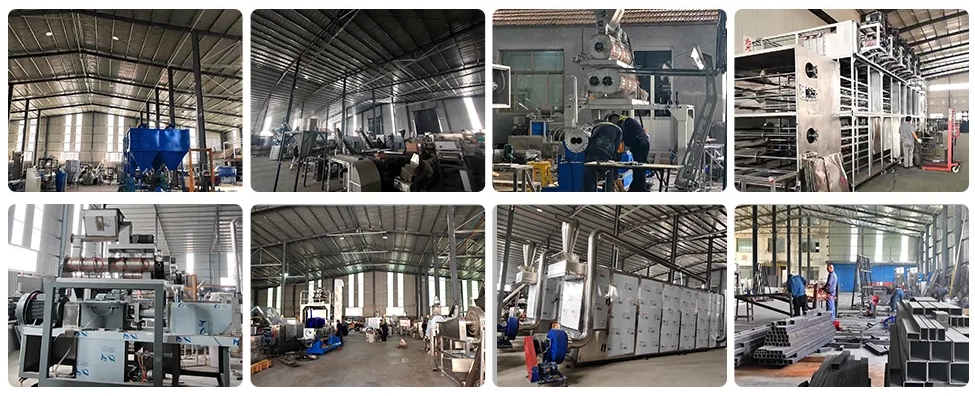
Shaping Identity: Square, Round, Flat, and Hollow
Beyond the wave, the noodle’s cross-section is a key feature.
- Square/Round: The most common, determined by the shape of the cutting blades.
- Flat: A wider, flatter noodle, like those in yakisoba or certain stir-fry styles.
- Hollow: Some advanced machines can create noodles with a hollow center. This isn’t just a gimmick; the hollow tube allows hot water to penetrate the center of the noodle strand during brewing, leading to a more consistent and faster rehydration from the inside out.
For the artisanal producer, offering a unique noodle shape or texture can be a significant point of differentiation, signaling a departure from the industrial norm.
Pillar 4: The Science of Preservation: Steaming, Frying, and the Modern Alternatives
This is the “instant” in instant noodles. The raw, cut noodles are perishable. To achieve a shelf-stable product that cooks in minutes, they must be pre-cooked and dehydrated. The method chosen is one of the most defining aspects of the final product.
The Flash Frying Method: The Classic Standard
This is the traditional and most widespread method, instant noodle making machine responsible for the brick-like block we all know.
- Steaming (Gelatinization): First, the raw noodles are conveyed through a steam chamber. This moist heat causes the starch granules within the noodle to absorb water and swell, a process called gelatinization. This pre-cooks the noodle, making it edible. The steam also sets the noodle’s shape.
- Seasoning (Optional): At this stage, the steamed noodles can be lightly sprayed or tumbled with a seasoning liquid, which allows flavor to be infused into the noodle block itself.
- Molding: The steamed noodles are folded by a mechanical arm into the familiar nested block within a metal mold.
- Deep-Frying: The molded noodle block is then passed through a bath of hot oil (typically 140-160°C / 284-320°F) for a very short time, usually 60-120 seconds. This process serves two vital functions:
- Rapid Dehydration: The intense heat instantly vaporizes the water inside the noodle, creating a porous, spongelike structure filled with microscopic air pockets. This is what allows for near-instant rehydration later.
- Cooking the Noodle: The high temperature completes the cooking process, giving the noodle its final texture and color.
The oil used is crucial. Palm oil is the industry standard due to its high smoke point, stability, and low cost. However, small-batch producers often use higher-quality oils like canola, sunflower, or rice bran oil to appeal to health-conscious consumers and impart a cleaner flavor. The downside is that flash-frying results in a product with a high fat content (typically 15-20%).
The Air-Drying / Non-Fried Revolution
In response to demand for healthier options, non-fried (or air-dried) noodles have become a major segment. This method is far more challenging, especially at a small scale, as it requires exquisite control over time and temperature.

- Al vapor: Similar to the fried process, the noodles are fully steamed to achieve gelatinization.
- Secado: Instead of frying, the noodle blocks are sent through a multi-stage drying tunnel. This is a slow, gentle process that can take several hours.
- Initial Drying: Lower temperature and higher humidity to remove surface moisture without case-hardening (creating a crust that traps moisture inside).
- Main Drying: Higher temperature and lower humidity to steadily remove the internal moisture.
- Final Conditioning/Cooling: A period to equalize the moisture content throughout the noodle and cool it down.
The science of air-drying is about driving the moisture content down from ~35% after steaming to ~10-12% for shelf stability, without cracking the noodles or causing starch retrogradation (which makes the noodles hard and unable to rehydrate properly).
The resulting noodle is lower in fat (typically 3-7%) but has a different texture. It is often less “springy” and can have a denser, more pasta-like quality. The rehydration time is also usually longer. Mastering this process to create a noodle that is both healthy and delicious is a key challenge for modern producers.
Emerging Technologies: Freeze-Drying and Microwave Drying
Some avant-garde producers are experimenting with even more advanced techniques.
- Liofilización: The cooked noodles are frozen, and then placed in a vacuum chamber where the ice sublimates directly from solid to gas. This preserves the noodle’s structure exceptionally well and results in a very high-quality, porous product that rehydrates beautifully. However, the equipment is extremely expensive and the process is energy-intensive, making it difficult for small-batch economics.
- Microwave-Vacuum Drying: This uses microwave energy in a vacuum environment to rapidly vaporize water. It can create a porous structure similar to frying but without the oil. It’s a promising technology but still rare at a small scale due to cost and technical complexity.
The choice of preservation method is a fundamental statement about the brand’s values: tradition and texture (frying) versus health and a cleaner label (air-drying).
Pillar 5: The Soul of the Bowl: Crafting Complex, Multi-Layered Soup Bases and Sauces
A noodle is a vehicle for flavor. While the industrial packet often contains a monolithic powder of salt, MSG, and hydrolyzed vegetable protein, the small-batch producer treats the soup base or sauce as a culinary centerpiece. This is where the chef’s palate meets food science.
The Foundation: Building Depth of Flavor
The goal is to create a “gestalt” flavor—a whole that is greater than the sum of its parts. This is achieved through layers of ingredients prepared using classic culinary techniques.
- The Broth Base: Many premium products include a liquid soup base, often a concentrated stock.
- Animal Broths: Slow-simmered stocks from chicken, pork bones (especially for tonkotsu-style), beef, or seafood (dried sardines, prawns, scallops) form a rich, collagen-rich foundation.
- Dashi: The Japanese cornerstone of umami, typically made from kombu (kelp) and katsuobushi (shaved bonito flakes). This provides a deep, savory baseline that is not overly meaty.
- Vegetable Broths: For vegan options, a robust broth made from shiitake mushrooms, daikon radish, carrots, and onions can provide surprising depth.
The Aromatics and Fermented Powerhouses
These ingredients add complexity and “high notes” to the foundational broth.
- Aromatics: Garlic, ginger, scallions, and leeks are often sautéed or roasted to develop their sugars before being incorporated, adding a fragrant, savory-sweet dimension.
- Fermented Ingredients: This is the secret weapon for umami.
- Salsa de soja: Fermented soy and wheat, providing saltiness and a deep, complex savoriness.
- Miso: Fermented soybean paste, available in countless varieties (white, red, barley), each contributing its own unique salty, sweet, funky profile.
- Doubanjiang: A spicy, fermented broad bean and chili paste from Sichuan cuisine.
- Fish Sauce: The pungent, salty-umami backbone of much Southeast Asian cooking.
The Fat Component: Flavor Carrier and Mouthfeel
Fat is not the enemy; it is a crucial carrier of flavor and provides a luxurious mouthfeel that coats the tongue.
- Aromatic Oils: Many premium kits include a separate oil packet. This isn’t just any oil—it is an infused oil. Scallion oil, chili oil (with its sediment of chili flakes), garlic oil, or sesame oil are common. These oils add a burst of fragrance and flavor that is diluted if simply mixed into a powder.
- Rendered Fats: Chicken fat (schmaltz) or pork lard can be used to add an incredibly rich, meaty flavor that powder cannot replicate.
The Technical Challenge: Dehydration and Stabilization
Translating this complex, liquid-centric cuisine into a stable, dry format is the ultimate challenge.
- Spray Drying: The liquid soup base is atomized into a hot chamber, instantly turning the droplets into powder. This works well but high heat can degrade delicate volatile aromas.
- Liofilización: Superior for quality. The liquid or even solid components (like vegetables, tofu, or meat) are frozen and the water is removed via sublimation. This preserves the shape, color, and, most importantly, the flavor of the ingredients far better than any other method. Seeing actual pieces of spring onion, corn, or shrimp in the packet is a hallmark of a premium product made with freeze-drying.
- Paste Sauces: Some products bypass the powder altogether for a “soup paste” or liquid sauce packet. This requires robust packaging and preservatives (like natural ones: salt, sugar, vinegar) but delivers a flavor profile closest to the original recipe.
The small-batch producer must be a master of both the kitchen and the lab, balancing culinary ambition with the practicalities of food preservation and safety.
Pillar 6: The Ecosystem of Execution: Scalable Processes, Packaging, and Brand Narrative
A great product in a kitchen is not a business. The final pillar encompasses all the elements required to bring that product to market consistently, safely, and compellingly.
The Scalability Conundrum: From Kitchen to Commissary
The leap from making ten batches to a hundred or a thousand is fraught with peril.
- Equipment Scaling: The tabletop mixer and hand-cranked sheeter used for prototyping will not suffice for production. Investing in small-scale commercial equipment—a 20-quart spiral mixer, a multi-pass noodle sheeter, a custom-sized steaming cabinet, and a drying oven—is a significant capital outlay. Each piece of equipment must be understood, calibrated, and maintained.
- Process Standardization (SOPs): Every step of the process, from weighing the flour to the final packaging temperature, must be documented in Standard Operating Procedures. This ensures that Batch #001 tastes the same as Batch #501. It requires rigorous quality control (QC) at every stage: checking dough consistency, noodle thickness, moisture content after drying, etc.
- Food Safety and Regulation: Operating a food production facility brings the producer under the scrutiny of food safety authorities (e.g., the FDA in the US, EFSA in Europe). This involves implementing a HACCP (Hazard Analysis Critical Control Point) plan, maintaining immaculate hygiene, and ensuring proper labeling with nutritional information and allergen warnings.
Packaging: The Silent Ambassador
Packaging for instant noodles serves multiple critical functions beyond mere containment.
- Preservation: It must be an effective barrier against oxygen, moisture, and light to prevent rancidity (especially for fried noodles) and staling. This typically requires multi-layered laminated plastic or foil pouches.
- Functionality: The cup noodle format is an engineering marvel, with the cup itself serving as the cooking vessel. For packet noodles, the design must allow the consumer to easily access multiple sachets.
- Brand Storytelling: This is where the small producer shines. The packaging is the primary touchpoint with the consumer. It must communicate the brand’s ethos: artisanal, healthy, adventurous, authentic. High-quality photography, clean design, transparent ingredient lists, and the story of the noodle’s origin can justify a premium price point. Using sustainable or recyclable materials can also be a powerful differentiator.
Building the Brand Narrative
In a crowded market, the story is often as important as the substance. The small-batch producer has a powerful advantage: authenticity.
- Provenance: Highlighting the source of ingredients—”single-origin wheat from a family farm in Saskatchewan,” “kombu harvested from the coast of Hokkaido.”
- Craftsmanship: Emphasizing the hands-on process—”slow-laminated dough,” “small-batch simmered broths.”
- Culinary Inspiration: Telling the story behind the flavors—”inspired by a night market in Taipei,” “a recipe from our grandmother’s kitchen in Seoul.”
This narrative is communicated through packaging, website, social media, and partnerships with like-minded retailers. It builds a community of loyal customers who buy into the brand’s values, not just its products.
The production of a small-batch instant noodle is a symphony, not a solo. It is a complex, interdependent process where the choice of flour influences the dough’s hydration, which dictates the sheeting process, which is preserved by a method that defines the texture, which is ultimately brought to life by a sauce whose complexity must survive dehydration, all within an ecosystem that ensures consistency, safety, and market appeal.
Mastering these six pillars—Flour, Dough, Architecture, Preservation, Flavor, and Ecosystem—is what allows a small producer to transcend the category of mere “instant food.” It is the journey to create a product that offers a moment of genuine culinary delight, a complex and satisfying meal that just happens to be convenient. In unpacking these layers, we gain a profound appreciation for the craft, revealing that within that simple, folded block of noodles lies a world of science, tradition, and innovation. The future of instant noodles is not just faster or cheaper; it is smarter, healthier, and infinitely more delicious.

